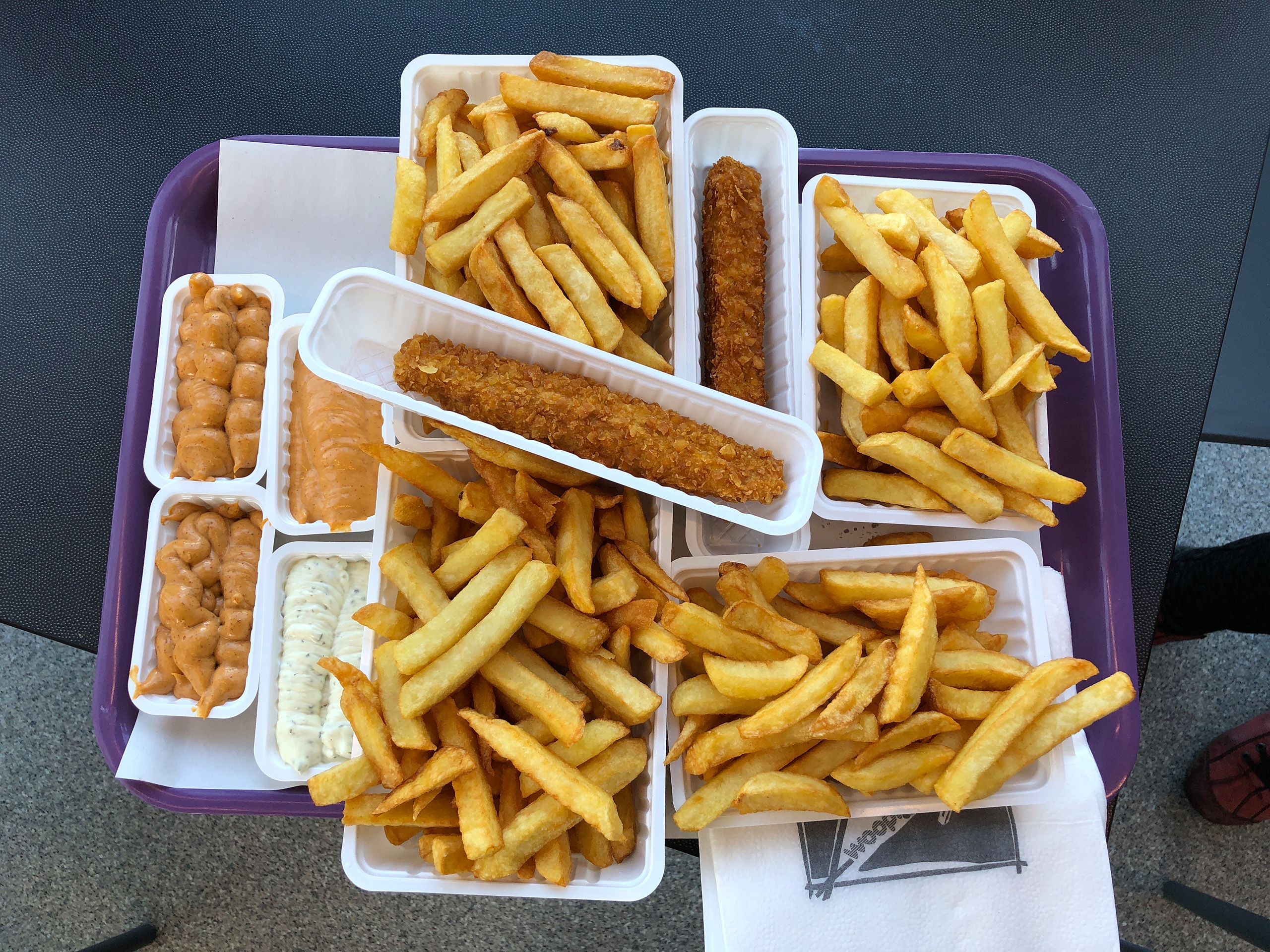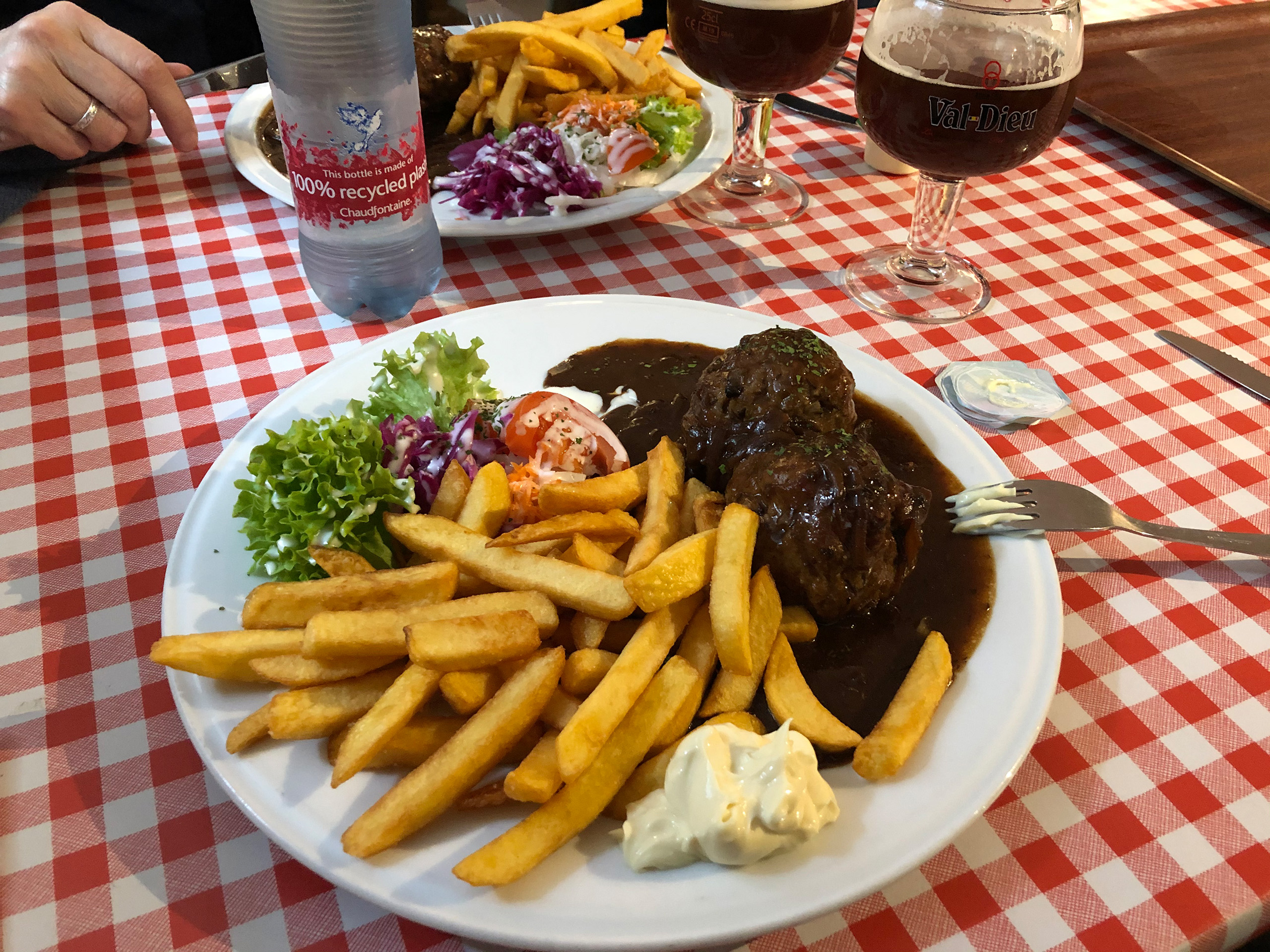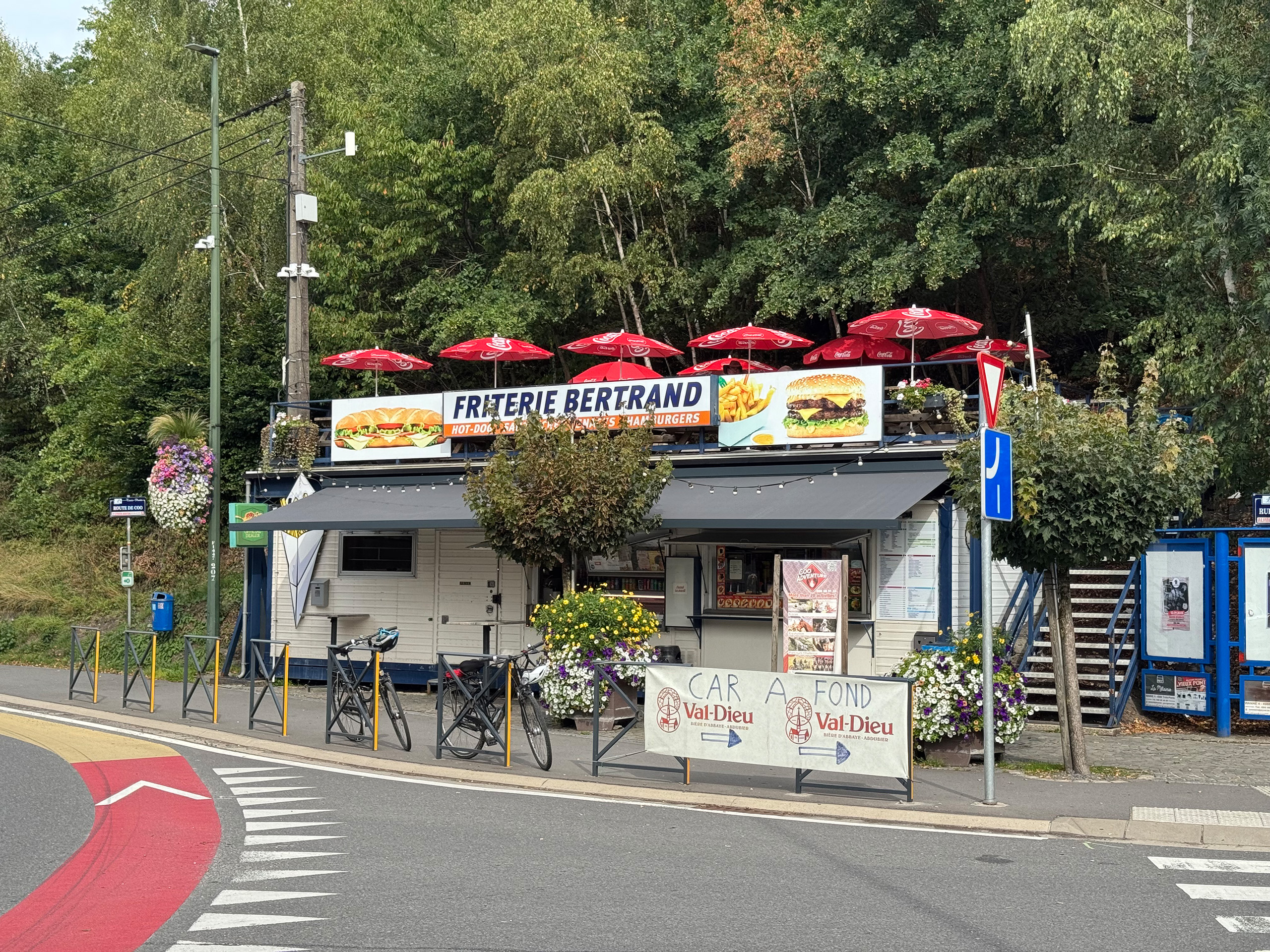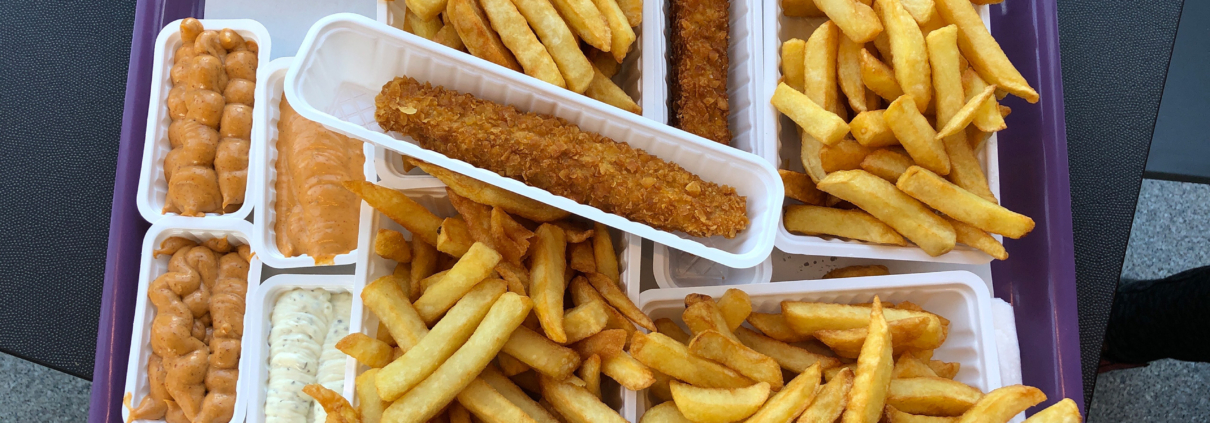“French” Fries: Belgium’s National Dish

Do French fries come from France? The name might suggest so. Do they originate from the Netherlands, the land of deep fryers? Or could fish and chips from the UK have played a role in their creation? Or perhaps fast-food chains from the US?
In the Meuse valley, located in the French-speaking southeast of Belgium, small fish were caught in the Meuse and then fried. However, in winter, when the river froze and fishing became difficult, people started frying potato sticks as a substitute.
This origin story seems to be the most widespread, but it is not undisputed – even among Belgian experts. The next most common theory suggests that fries originated in Paris before gaining popularity in Belgium. However, Paris is not known for its fries, and France lacks a fries culture, apart from northern regions – near the Belgian border.
Some also speculate that fries may have come from Spain, as it was there that potatoes from the colonies first appeared and because Mediterranean countries are known for frying a lot of food. The oldest known records mentioning fried potatoes are said to come from Chile, though they seem to describe diced potatoes rather than the fries we know today.
In the United States, French fries became popular after US soldiers returned from Europe following World War I, where they had encountered fries prepared by French-speaking Belgian troops. Since then, in North America, all deep-fried potatoes have been referred to as French fries.
Fries, known as Frites / Frieten, are an integral part of Belgian culture.
What makes Belgian Fries so special?
First and foremost, they are made from fresh potatoes. Specific potato varieties are peeled, soaked in salt water, and then cut into sticks, slightly thicker than in other countries. The fries are initially fried at a low temperature until cooked through. They are then set aside and fried again at a higher temperature. This double-frying process results in fries that are crispy on the outside, not greasy, and soft on the inside. Traditionally, Belgians use beef fat instead of vegetable oil, which gives the fries their distinctive and rich flavor.

Of course, it should also be mentioned that there are dozens of sauces for fries in Belgium. There are usually 20-30 sauces to choose from in every friterie. Mayonnaise is particularly popular, while ketchup is less favored.
Some of the most popular additional sauces include:
- Andalouse (pleasantly aromatic: mayonnaise, tomato, mustard, and herbs)
- Samourai (slightly spicy: mayonnaise, tomato, bell pepper, and chili)
- Tartare (a Belgian herb mayonnaise)
- Americaine (very tangy: tomato, bell pepper, onion, and herbs)
- Cocktail (relatively sweet: mayonnaise, ketchup, and various other ingredients)
- Bearnaise (fairly sour: butter, egg yolk, vinegar, and herbs)
- Pickles (warning, not for everyone, very sour: pickled vegetables)
- Goulash (warm)
- Mushroom (warm)
- Pepper (warm)
Fry cones are ideal for on-the-go eating, but serving fries in trays is becoming more common. Some Belgians enjoy their sauce poured over the fries, but it’s generally served on the side.
In Belgium, fries are not considered a side dish but a main course. They are often paired with meatballs, goulash, various fried accompaniments, or, of course, mussels. Don’t forget the mitraillettes: fries, sauce and meat in a baguette!

Local institutions known as “Fritkots” are found throughout the country. These iconic fry stands are often stationary trailers that have been expanded over time with extensions and terraces. During peak times, patience is a must!

 © VisitBelgium.net
© VisitBelgium.net
 © VisitBelgium.net
© VisitBelgium.net © VisitBelgium.net
© VisitBelgium.net
Leave a Reply
Want to join the discussion?Feel free to contribute!